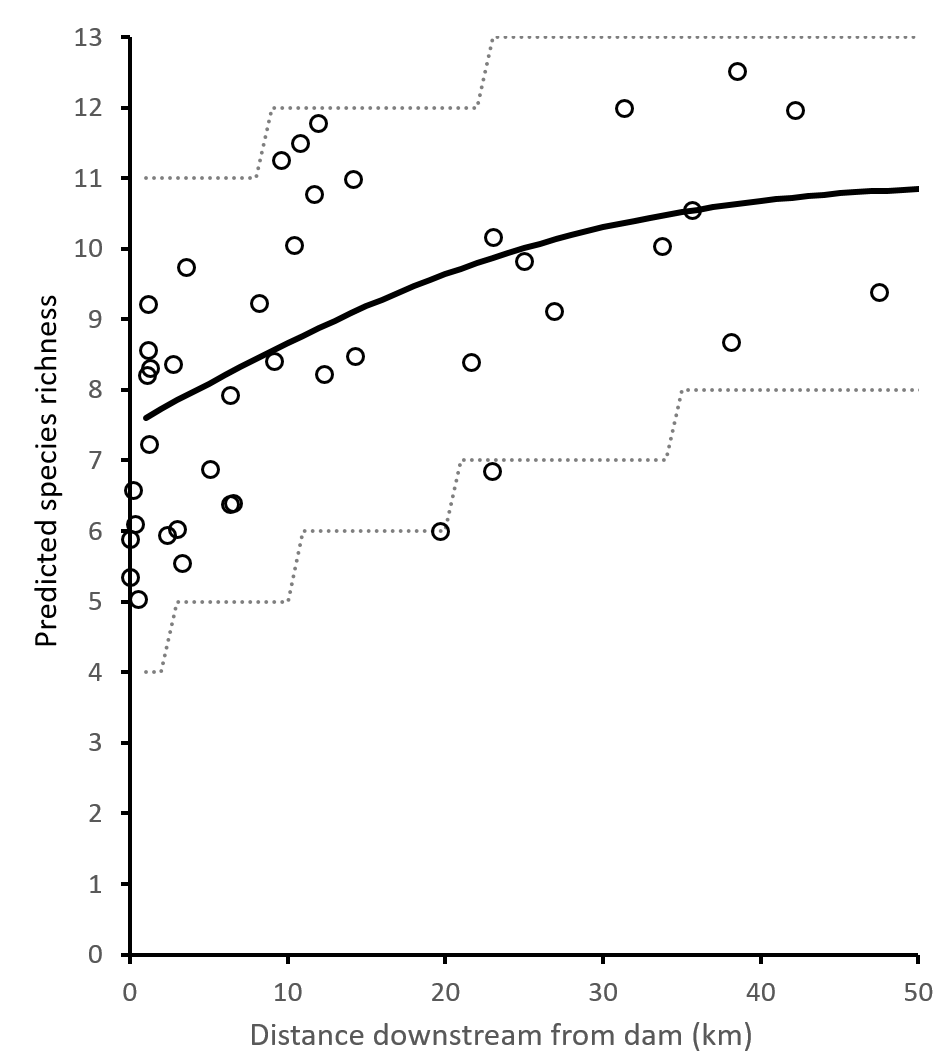Influence of damming on anuran species richness in riparian areas: A test of the serial discontinuity concept
Abstract/Summary
Almost all large rivers worldwide are fragmented by dams, and their impacts have been
modeled using the serial discontinuity concept (SDC), a series of predictions regarding
responses of key biotic and abiotic variables. We evaluated the effects of damming on
anuran communities along a 245-km river corridor by conducting repeated, timeconstrained
anuran calling surveys at 42 locations along the Broad and Pacolet Rivers
in South Carolina, USA. Using a hierarchical Bayesian analysis, we test the biodiversity
prediction of the SDC (modified for floodplain rivers) by evaluating anuran occupancy
and species diversity relative to dams and degree of urbanized land use. The mean
response of the anuran community indicated that occupancy and species richness
were maximized when sites were farther downstream from dams. Sites at the farthest
distances downstream of dams (47.5 km) had an estimated ~3 more species than
those just below dams. Similarly, species-specific occupancy estimates showed a trend
of higher occupancy downstream from dams. Synthesis and applications. Using empirical
estimation within the context of a 245-km river riparian landscape, our study supports
SDC predictions for a meandering river. We demonstrate that with increasing
distance downstream from dams, riparian anuran communities have higher species
richness. Reduced species richness immediately downstream of dams is likely driven
by alterations in flow regime that reduce or eliminate flows which sustain riparian
wetlands that serve as anuran breeding habitat. Therefore, to maintain anuran biodiversity,
we suggest that flow regulation should be managed to ensure water releases
inundate riparian wetlands during amphibian breeding seasons and aseasonal releases,
which can displace adults, larvae, and eggs, are avoided. These outcomes could be
achieved by emulating predam seasonal discharge data, mirroring discharge of an undammed
tributary within the focal watershed, or by basing real-time flow releases on
current environmental conditions
Publication details
| Published Date: | 2018-01-26 |
| Outlet/Publisher: | Ecology and Evolution |
| Media Format: | URL |
ARMI Organizational Units:
Southwest, Northern California - BiologyTopics:
ManagementMonitoring and Population Ecology
Water
Place Names:
South CarolinaKeywords:
call surveysdams
habitat alteration

